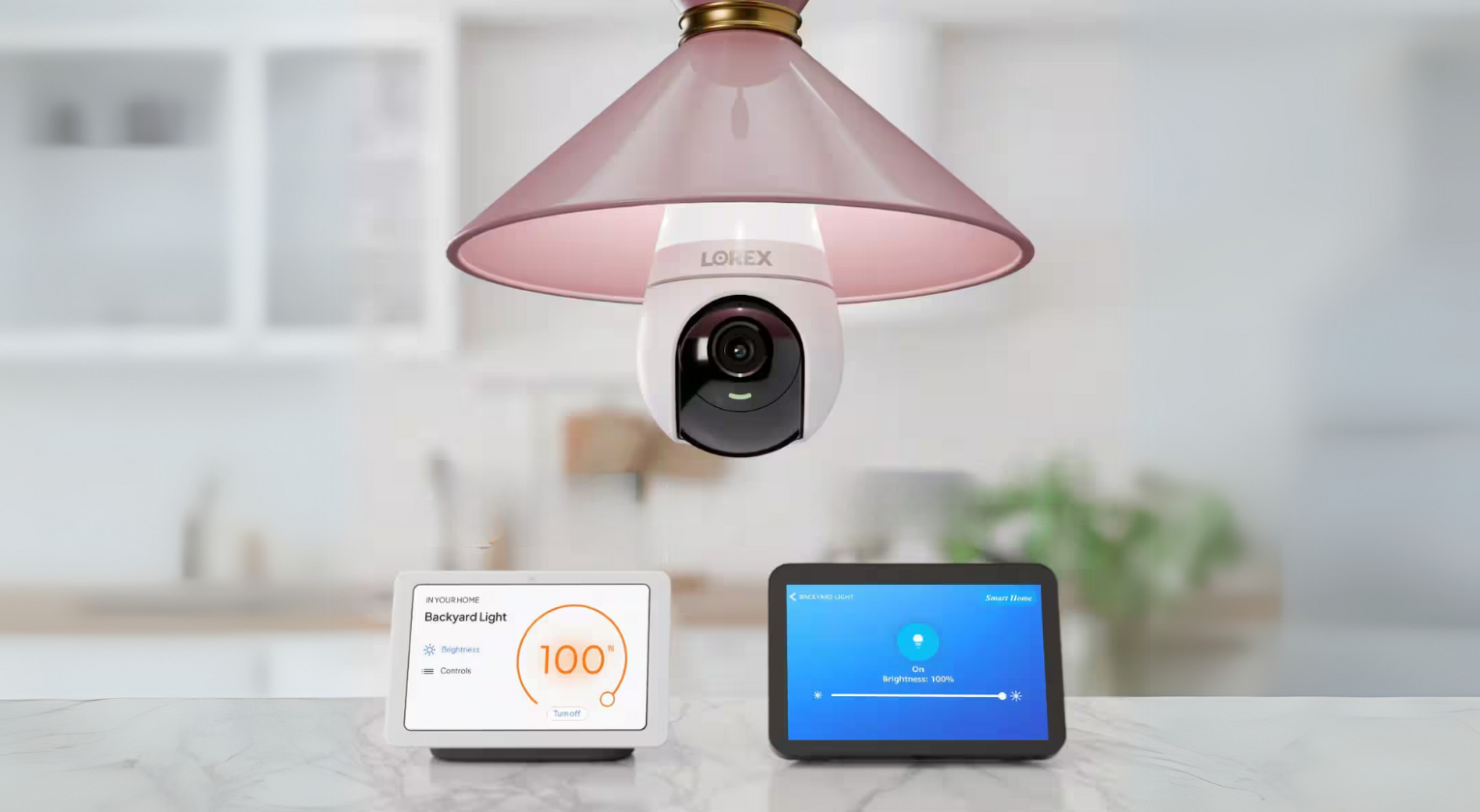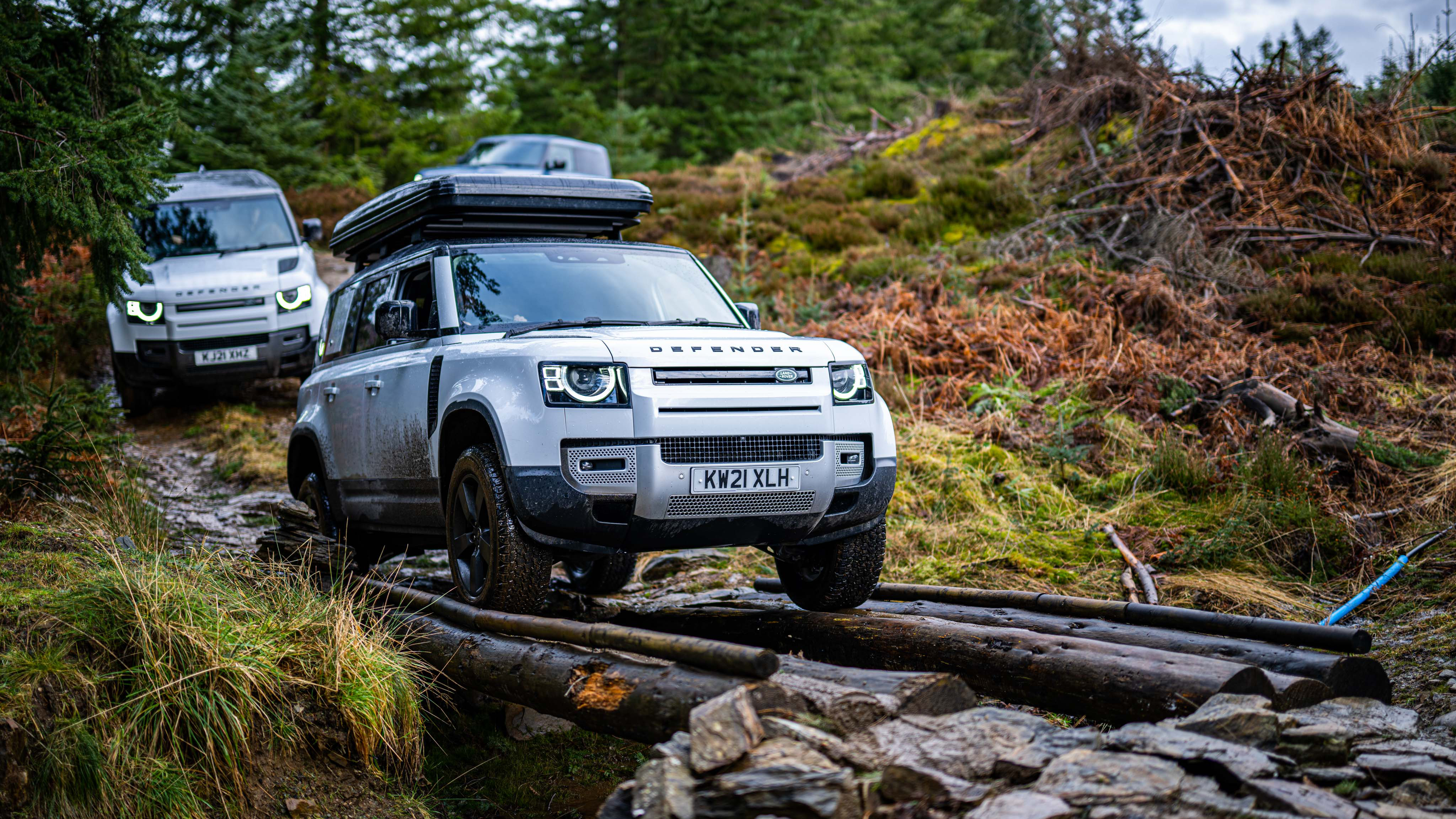

During the pandemic, much of the UK discovered beautiful landscapes right on our doorstep. Whether it was making the most of our allotted one hour of exercise or swapping a plane ticket and swim shorts for hiking boots, a backpack and a tent. Not all these spots are at their most picturesque in the daytime, though – some are best enjoyed under the cover of darkness.
The UK is home to some of the largest areas of Dark Sky (low light pollution areas) in Europe making it the perfect place to capture the canopy of the stars with the naked eye, a mirrorless camera, binoculars or a telescope.
Land Rover recently teamed up with astronomer Dr Jenifer Millard to list the ten best stargazing spots across the UK, and inspired by this list, created a small team of explorers, including myself, to search for an additional dark sky location in the Scottish Highlands.
Our journey began at Edinburgh Airport, where a fleet of shiny Land Rover Defenders awaited our arrival. A mission briefing set out a plan for the day – navigate our way to North West Scotland and capture a clear picture of a star filled sky.
The start of the journey was simple enough, we set off in a convoy along Scoland’s motorways – a sight which I’m sure would confuse some locals. Strong wind aside, the conditions were okay, although big orange warnings of snow and ice were ominous signs of things to come.
Unphased, we ploughed on towards our first stop – a scenic spot on an estate where British chef Simon Stallard would teach us about locally foraged food and outdoor cooking.

Simon is the owner of The Hidden Hut in Cornwall and recently cooked for world leaders at the G7 Summit. As we arrived, he had already prepared the large fire pit with lengths of freshly chopped wood for ‘charging’ the meat, and heather to add subtle flavour. The food we were cooking was a step above your average campsite barbeque. Instead of supermarket sausages we had venison from the estate we were sat in and scallops caught near our stargazing spot.
Sign up to the T3 newsletter for smarter living straight to your inbox
Get all the latest news, reviews, deals and buying guides on gorgeous tech, home and active products from the T3 experts
Two key lessons I took away from the lunch was that you shouldn’t be afraid to cook meat directly into coals and that spraying champagne onto your scallops not only looks great on your Instagram feed, but also adds an amazing caramel flavour.
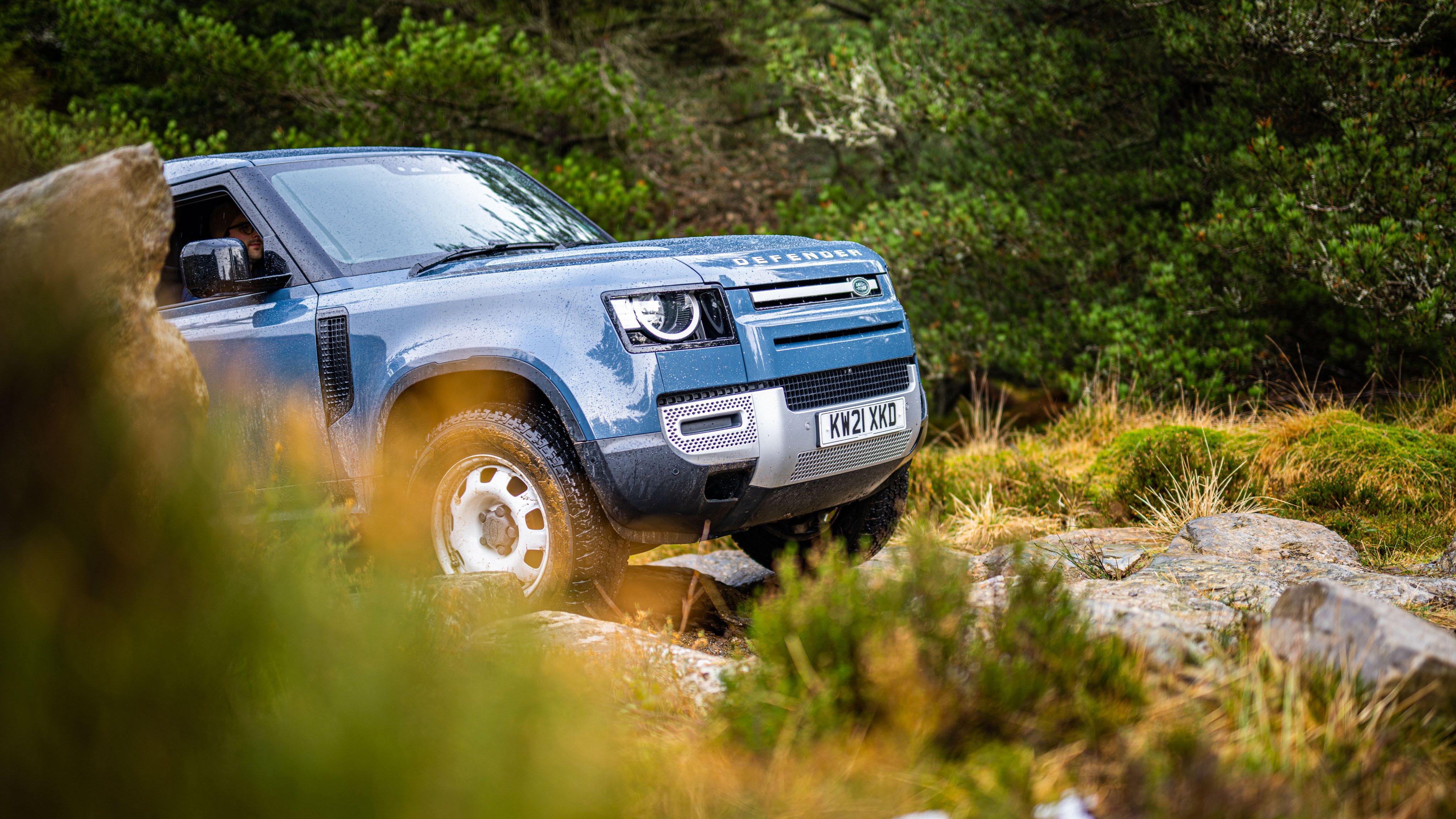
After lunch, our stomachs full, we set off for our final destination – Torridon. This is where the Land Rover Defender really came into its own, as we traversed through tricky off-road terrain. With the low-range gearbox engaged and the appropriate off-road mode selected on the Terrain Response system, the Defender made light work of the sticky mud, wet rocks, and steep hills.
All of the technology, from the traction control and all-wheel drive to the cameras that help you place the vehicle, make you feel like an overlanding pro. It gives you a confidence that I’m not sure many other cars would give you.
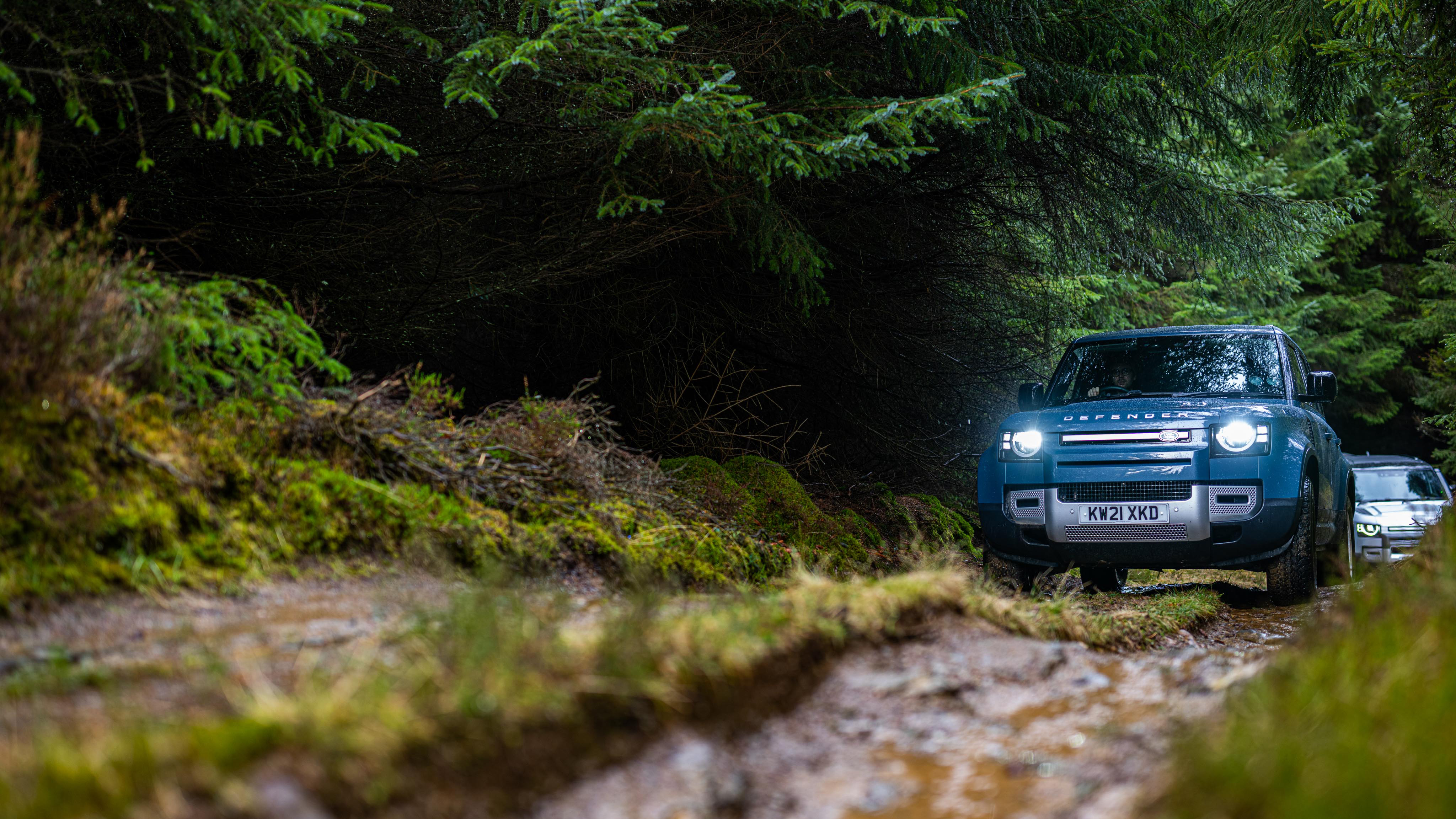
As we neared Torridon, the roads became even more scenic. The sun set behind the 3,000ft mountains and it was time to hunt for some dark skies.
We arrived at our stargazing spot in pitch black, happy that the weather was playing ball. Constellations were visible with the naked eye, and, if we’d timed it right, Mercury, Venus, Mars, Jupiter, and Saturn could have been too.
With binoculars, you could see fainter objects and enhance the view of naked-eye objects. Planets transform from star-like points to discs, Jupiter’s four Galilean moons become visible, and some bright stars are revealed to really be double stars.
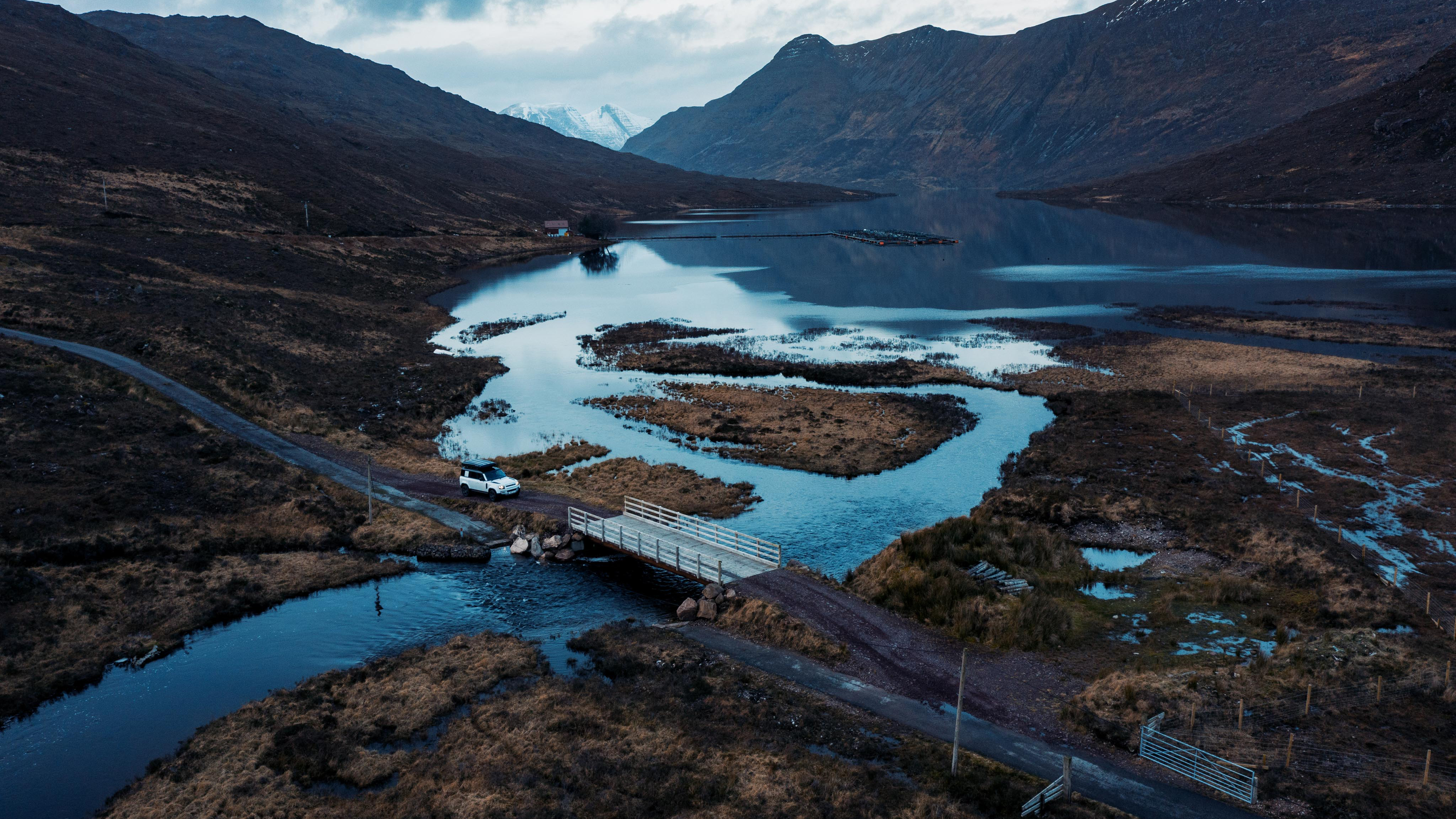
Of course, if I’d taken one of the best telescopes along with me even more shapes and details can be teased out. For example, Saturn’s rings are easily discerned, as are Jupiter’s stripes, and larger telescopes can even reveal Mars’ polar ice caps. Telescopes make star clusters look almost three dimensional.
After setting up a Nikon Z9 on a tripod and dialling in settings for starlight photography, the weather decided we’d had enough fun – the clouds rolled in, and, shortly after that, hail forced us to quickly pack up and return to our vehicles. I didn’t get enough time to take a picture, but luckily the professional photographer from Nikon managed to capture an image of the sky just before the weather changed, so I’m chalking that up as a successful mission in my books.
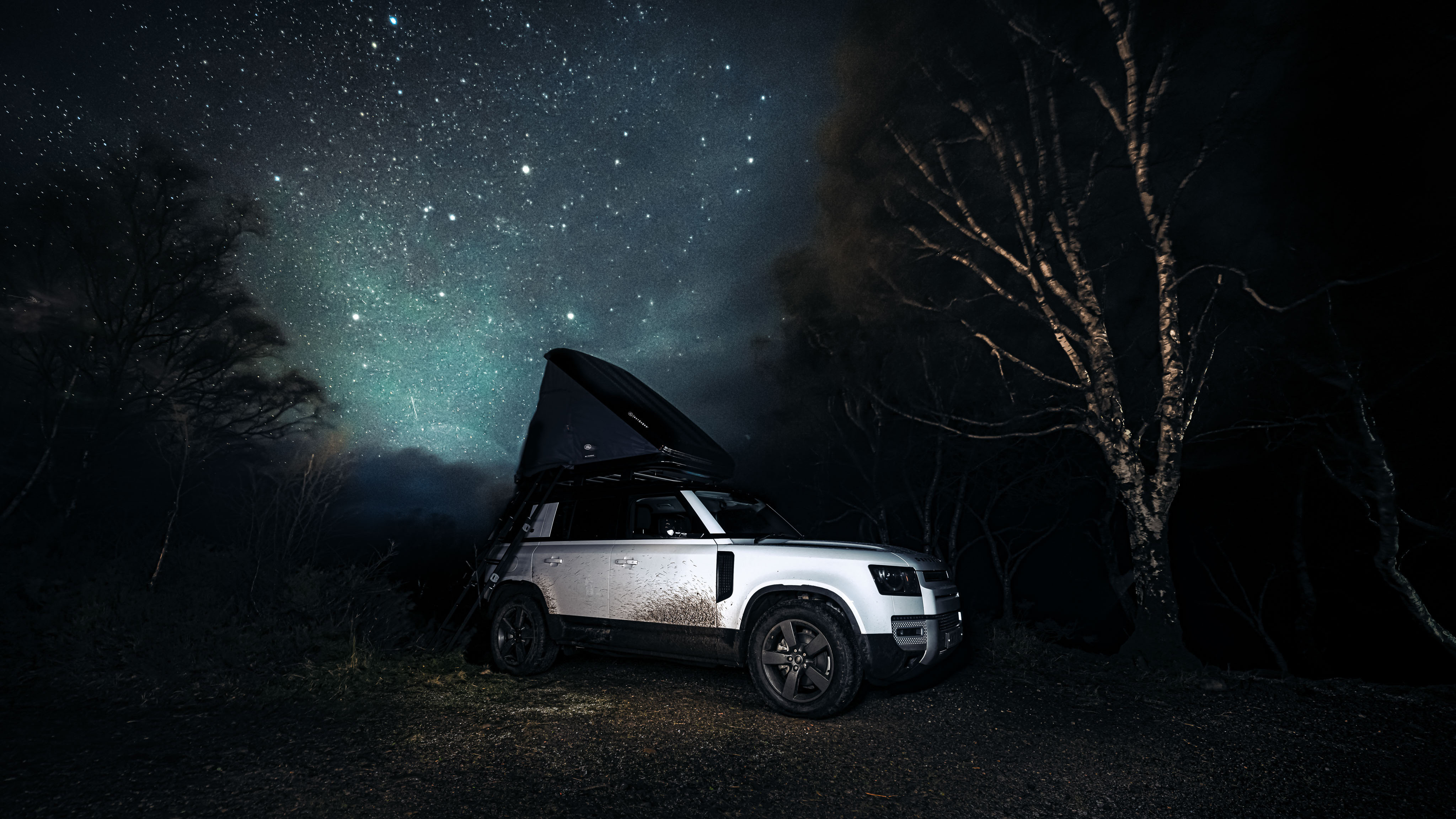
If we’ve inspired you to find your own slice of Dark Sky, Land Rover and Dr Jenifer Milard have revealed ten beautiful stargazing spots in the UK:
Top Dark Sky Spots in the UK
Carrick-a-Rede Rope Bridge, Northern Ireland
Carrick-a-Rede Rope Bridge is one of only two Dark Sky sites in Northern Ireland making it incredibly special for those nearby. The National Trust site spans 66 feet across the Atlantic Ocean offering breath-taking views of the ocean in the daytime and the starry night sky in the dark. The site is also backed by the Northern Ireland Amateur Astronomy society who are often there with their equipment.
Dr Jenifer Milard: “The 24-hour car park of this National Trust site offers excellent dark skies and is highly accessible.”
Compton Bay, Isle of Wight
The Isle of Wight’s Compton Bay draws stargazers all year round as it is largely devoid of light pollution, allowing visitors to spot all sorts of stars in the sky - even with just the naked eye. On a clear night you can see the Milky Way with great clarity. When it comes to constellations, you can spot Orion (named after a hunter in Greek mythology), The Plough (otherwise named the Big Dipper in US and Canada) and Cassiopeia (named after the vain queen who boasted about her unrivalled beauty).
Dr Jenifer Milard: “Nearby Fort Victoria Country Park Car Park is a Dark Sky Discovery Site, noted for its accessibility and excellent skies largely devoid of light pollution”
Tomintoul and Glenlivet, Cairngorms National Park, Scotland
This is the most northernly Dark Sky region of the UK. Here stargazers can be lucky enough to see the Aurora Borealis (or the Northern Lights as they are more commonly referred to) as well as the Milky Way. Twice a year, this National Park will also provide a view of the Spring equinox (around 20 March) and Autumn equinox (around 23 September). That is when the centre of the visible sun is directly above the equator.
Dr Jenifer Milard: “Cairngorms Dark Sky Park boasts Gold Tier dark skies. Three Dark Sky Discovery Sites are associated with Tomintoul and Glenlivet Dark Sky Park – Glenlivet Blairfindy car park, Tomintoul Field of Hope, and The Carrachs car park.”
Llynnau Cregennen, Snowdonia National Park, North Wales
Over in one of the remotest parts of Britain, Snowdonia presents one of the darkest and clearest views of the sky for astronomers. Facing North from the North Wales National Park, stargazers can see the North Star - the brightest star in the Ursa Minor constellation – with just the naked eye. Also visible here is the Cassiopeia constellation.
Dr Jenifer Milard: “Concerted efforts by the Park Authority resulted in Snowdonia achieving International Dark Sky Reserve Status in 2015. With numerous lakes, trails, and places of outstanding beauty, budding stargazers can choose from dozens of locations. The lakes of Lynnau Cregennen, Dolgellau, are a recommended stargazing site and are particularly picturesque”
Dalby Forest, North York Moors National Park, North Yorkshire
This stunningly secluded part of northern England offers beautiful coastline views in the daytime between Saltburn and Scarborough. At night time however, you can head up to Kettleness Cliff where, thanks to its height and dark sky, you can spy up to 2,000 stars at any one time.
Dr Jenifer Milard: “Awarded International Dark Sky Reserve status in 2020, the region is committed to reducing light pollution and making dark skies accessible for all. Dalby Forest is home to Scarborough & Ryedale Astronomical Society, who hold regular stargazing events, and Starfest, an annual 3-night star camp held in August.”
Usk Reservoir, Brecon Beacons National Park, Wales
The Usk Reservoir in Brecon Beacons makes the list thanks to its crystal-clear cosmos that it offers stargazers all year round. This is another great spot for those looking out for the Milky Way. Depending on the time of year, you may also be able to spot colourful nebulas in the sky - a distinct body of interstellar clouds - or even meteor showers.
Dr Jenifer Milard: “The Brecon Beacons National Park achieved International Dark Sky Reserve status in 2012, the fifth destination in the world to be awarded this rare accolade. The region is home to several Dark Sky Discovery Sites, but Usk Reservoir offers some of the darkest skies and is accessible all year round with plentiful car parking.”
Porlock Common, Exmoor National Park, Somerset
As the first ever Dark Sky Reserve in Europe, Exmoor boasts views of many planetary observations as well as thousands of stars via the Milky Way. They also run an annual Dark Skies Festival in late October to encourage everyone to look up.
Dr Jenifer Milard: “Exmoor National Park became the first Dark Sky Reserve in Europe 10 years ago. Porlock Common offers 360° views of some of the darkest skies available in the UK. There are no facilities directly on site, but equipment can be set up within the carparks.”
Kielder Observatory and forest, Northumberland
Located in the centre of the Northumberland International Dark Sky Park, Kielder Observatory is one of the most active stargazing sights in the way of events offering meetups nearly every night of the year. Kielder Forest is the second largest area of protected night sky in Europe and on a very dark night, you’ll feel close enough to touch Jupiter as the planet can even cast shadows on the ground.
Dr Jenifer Milard: “The Observatory hosts events almost every night of the year, studying the cosmos with telescopes when it’s clear and entertaining with tours and talks when clouds roll in.”
Kelling Health Holiday Park, Norfolk
In the North Norfolk countryside, Kelling Heath draws hundreds of astronomers and novice stargazers throughout the year. Visitors can see the seven stars of the Orion constellation, the Milky Way and even huge interstellar dust clouds on occasion.
Dr Jenifer Milard: “In September 2017, Kelling Heath was awarded ‘Dark Sky Discovery Site’ status – it is one of the best places in the UK to enjoy the starry sky unaffected by light pollution and is highly accessible. Multiple star parties are held here every year, drawing hundreds of astronomers. Caravan hire is available, and there are many amenities.”
Ben Damph Estate on Upper Loch Torridon, Scotland
Land Rover UK conducted an exploratory expedition to find the perfect Scottish west coast stargazing spot situated a mere 8 miles off-road from the village of Torridon.
Set in 14,500 acres of dramatic highland landscape and nestled on the edge of Upper Loch Torridon, sits the perfect stargazing spot on a clear night. The team took three Land Rover Defenders along the existing off-road route to the spot which – bereft of trees, and any signs of light pollution – provides a view of the Milky Way and even the possibility of experiencing the aurora borealis should the conditions be right.
Five tips for stargazing
Convinced that you want to give stargazing a go? Land Rover asked expert Dr Jenifer Milard for her top tips for stargazing novices.
- Wrap up warm: astronomy is a static hobby so it’s very easy to get cold. Hot drinks are a must too. Make sure you check out T3's guide to the best winter coats.
- Use a red-light torch: it takes your eyes around 30 minutes to become ‘dark adapted’, with pupils fully dilated so your eyes are sensitive to faint starlight. Exposure to white light, from any source, even your phone screen, will ruin your dark adaption. A red-light torch or red-light filter on your phone screen will preserve your dark adaption.
- Moonless nights are best: moonlight makes the whole night sky brighter, making it harder to see faint objects.
- Averted vision: by looking slightly to one side of your target object, you activate the more light-sensitive cells in your eyes, allowing you to see faint objects like nebulae and galaxies more easily. The light sensitive cells in your eyes do not detect colour, so only the brightest objects, like planets and bright stars, are not black-and-white.
- Star maps, apps, and a compass: these will help you plan your observing session and navigate the night sky, so you can find the objects you wish to view.

As the Style and Travel Editor at T3, Spencer covers everything from clothes to cars and watches to hotels. Everything that's cool, stylish, and interesting, basically. He's been a part of T3 for over seven years, and in that time covered every industry event known to man, from CES and MWC to the Geneva Motorshow and Baselworld. When he's driving up and down the country in search of the greatest driving roads, he can be found messing around on an electric scooter, playing with luxury watches, or testing the latest fragrances.

